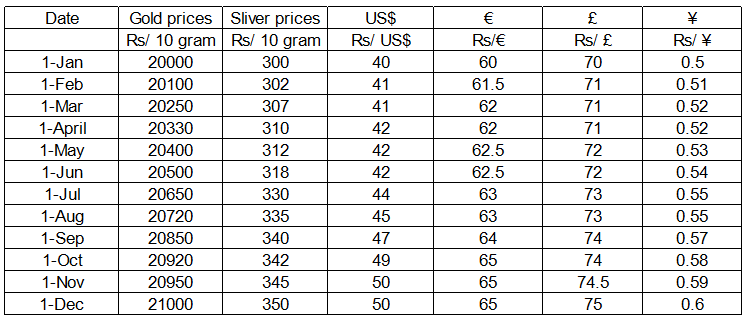answer questions based on the following information:
In the beginning of the year 2010, Mr. Sanyal had the option to invest Rs. 800000 in one or more of the following assets – gold, silver, US bonds, EU bonds, UK bonds and Japanese bonds. In order to invest in US bonds, one must first convert his investible fund into US Dollars at the ongoing exchange rate. Similarly, if one wants to invest in EU bonds or UK bonds or Japanese bonds one must first convert his investible fund into Euro, British Pounds and Japanese Yen respectively at the ongoing exchange rates. Transactions were allowed only in the beginning of every month. Bullion prices and exchange rates were fixed at the beginning of every
month and remained unchanged throughout the month. Refer to the table titled “Bullion Prices and Exchange Rates in 2010" for the relevant data.
Bullion Prices and Exchange Rates in 2010

Interest rates on US, EU, UK and Japanese bonds are 10%, 20%, 15% and 5% respectively.
Advisors were asked to prepare an investment strategy that involved US Bonds, EU Bonds and Japanese Bonds, keeping at least 20% of the initial fund in each of these assets for the entire year, and allowing exactly four additional transactions in the course of the year. On 2nd January 2011, while comparing five different recommendations that he had received from his financial advisors in the beginning of 2010, Mr. Sanyal referred to the table “Bullion Prices and Exchange Rates in 20
10”. One transaction is defined as the buying or selling of an asset. Which of the recommendation out of the following was the best one?